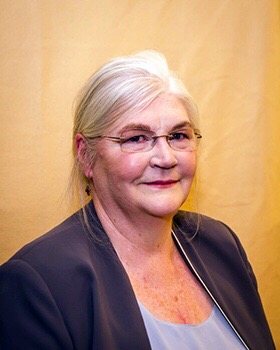Her Majesty the Queen has chosen, Lady Joy Smith DL, from Atherleigh a former teacher, to be the next High Sheriff of Greater Manchester for the year 2016 – 2017.
The Queen made her decision in her role as Duke of Lancaster earlier this week. Presented with a parchment called the Lites, bearing the names of those recommended to become High Sheriffs in the County Palatine of Lancashire, she used a silver bodkin to prick a hole next to her choice. The tradition is said to date back to the reign of Elizabeth I.
A special ceremony will take place on Thursday 14th April at Haigh Hall, when Lady Smith DL, will make her official declaration of office.
The High Sheriff in Nomination commented:
“It is a great honour to have had my name put forward by the Lord Lieutenant, and to have been selected by the Queen. I am grateful for this unique opportunity to serve the community of Greater Manchester, but also to place a special emphasis on the borough which has been my home for forty years. When I make my declaration in April, I will be promising, amongst other things, to conduct myself ‘for the honour of the Queen and the good of her subjects’. By drawing attention to the outstanding work which is done by so many people in the local area, I hope to do just that.”
Lady Smith DL, was born in Bolton and was the eldest of seven children. She was educated at Bolton School, Caerleon College in South Wales, and London University, and went on to become a teacher in secondary schools. For 25 years she served as a National Union of Teachers representative, and held numerous positions on the governing bodies of local schools. Since retiring from teaching she has worked part time in the office of Andy Burnham MP. She became a Trustee and board member of Age UK Wigan Borough, and she also supports Compassion in Action in Leigh.
She is married to Lord Smith of Leigh, leader of Wigan Council, and they have one daughter, Anna FC Smith, the artist.
The Office of High Sheriff, which is self-funding, can be traced back 1,000 years. Although the role is now essentially symbolic and ceremonial, High Sheriffs were originally appointed to be the sovereign’s representative in a county. They sat in judgment at trials and were responsible for maintaining law and order. Sheriffs are mentioned in Magna Carta, which King John signed 800 years ago, and by the end of the 13th century were fundamental to the running of the country. They also had to make sure executions were properly conducted, a role they continued to fulfil until the death penalty was abolished in the 1960s.
Today, the role of a High Sheriff is defined by five guiding principles: to uphold and enhance the ancient office and make a meaningful contribution to their county; to uphold the Royal Family, the Judiciary, the Police and other law enforcement agencies, the Emergency Services, Local Authorities and all recognised church and faith groups; to assure the welfare of visiting High Court Judges and to offer them hospitality; to support and encourage the voluntary sector and, to support the Lord Lieutenant of the County.







